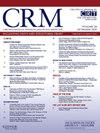二尖瓣和三尖瓣联合TEER与单TriClip导向导管:一项单中心研究。
IF 1.9
Q3 CARDIAC & CARDIOVASCULAR SYSTEMS
引用次数: 0
摘要
背景:合并的M-和T- TEER通常涉及两个独立的系统,使物流复杂化并增加程序风险。本研究旨在评估使用单个TriClip®可操纵引导导管(SGC)进行二尖瓣(M-TEER)和三尖瓣(T-TEER)经导管边缘到边缘修复的安全性和有效性。方法:纳入在2022年1月至2024年12月期间采用相同TriClip SGC进行M-和T- TEER联合治疗的中度至重度(3+)或重度(4+)退行性(DMR)或功能性(FMR)二尖瓣反流和大量/剧烈或重度功能性三尖瓣反流(TR)患者,这些患者被归类为纽约心脏协会(NYHA) III级或IV级。主要目标包括手术结果、MR和TR严重程度降低以及NYHA分级改善。结果:42例患者中,女性占64%;中位年龄:77岁[IQR: 9]),植入成功率100%,平均器械时间39.2±6.9 min,平均手术时间71.2±9.6 min。除2例(4.8%)三尖瓣单叶装置附着(SLDA)和1例(2.4%)房间隔缺损(ASD)闭合外,无住院或30天主要不良事件(MAEs)。中位随访期为0.91年,3例(7.1%)患者因心力衰竭住院,死亡率为零。在1年的随访中,所有患者均达到NYHA级≤II, MR≤2+,34例(81%)患者只有轻微/轻度tr。结论:使用相同的TriClip SGC联合M-TEER和T-TEER显示出良好的安全性和有效性,以及显着的功能和超声心动图改善。本文章由计算机程序翻译,如有差异,请以英文原文为准。
Combined mitral and tricuspid TEER with a single TriClip steerable guide catheter: A single-center study
Background
Combined M- and T- TEER typically involves two separate systems, complicating logistics and increasing procedural risks. This study aims to evaluate the safety and efficacy of combined mitral (M-TEER) and tricuspid (T-TEER) transcatheter edge-to-edge repair using a single TriClip® steerable guide catheter (SGC).
Methods
Patients with moderate-to-severe (3+) or severe (4+) degenerative (DMR) or functional (FMR) mitral regurgitation and massive/torrential or severe functional tricuspid regurgitation (TR), classified as New York Heart Association (NYHA) class III or IV, who underwent combined M- and T- TEER with the same TriClip SGC between January 2022 and December 2024, were included. The primary objectives included procedural outcomes, MR and TR severity reduction, and NYHA class improvement.
Results
Among 42 patients (64 % female; median age: 77 years [IQR: 9]), the implantation success rate was 100 %, with mean device and procedure times of 39.2 ± 6.9 and 71.2 ± 9.6 min, respectively. There were no in-hospital or 30-day major adverse events (MAEs), except for 2 patients (4.8 %) with tricuspid single leaflet device attachment (SLDA), and 1 patient (2.4 %) who underwent atrial septal defect (ASD) closure. Over a median follow-up period of 0.91 years, 3 (7.1 %) patients were hospitalized for heart failure, with zero mortality. At 1-year follow-up, all patients achieved NYHA class ≤II, along with MR ≤2+ and 34 (81 %) patients had only trivial/mild TR.
Conclusions
Combined M-TEER and T-TEER using the same TriClip SGC demonstrated favorable safety and efficacy, along with significant functional and echocardiographic improvements.
求助全文
通过发布文献求助,成功后即可免费获取论文全文。
去求助
来源期刊

Cardiovascular Revascularization Medicine
CARDIAC & CARDIOVASCULAR SYSTEMS-
CiteScore
3.30
自引率
5.90%
发文量
687
审稿时长
36 days
期刊介绍:
Cardiovascular Revascularization Medicine (CRM) is an international and multidisciplinary journal that publishes original laboratory and clinical investigations related to revascularization therapies in cardiovascular medicine. Cardiovascular Revascularization Medicine publishes articles related to preclinical work and molecular interventions, including angiogenesis, cell therapy, pharmacological interventions, restenosis management, and prevention, including experiments conducted in human subjects, in laboratory animals, and in vitro. Specific areas of interest include percutaneous angioplasty in coronary and peripheral arteries, intervention in structural heart disease, cardiovascular surgery, etc.
 求助内容:
求助内容: 应助结果提醒方式:
应助结果提醒方式:


